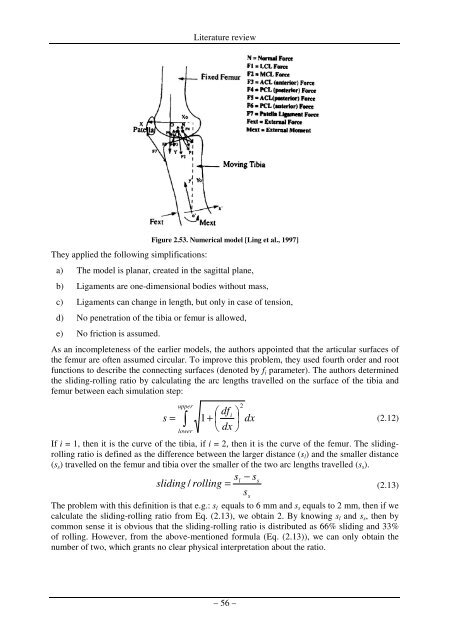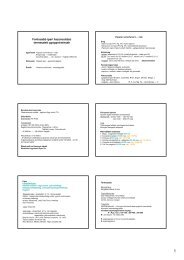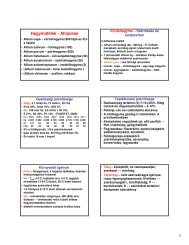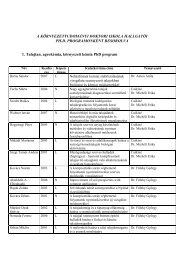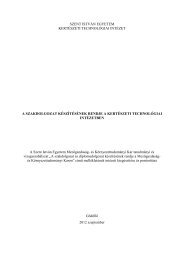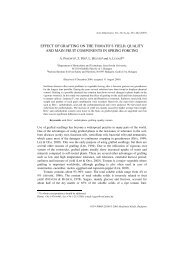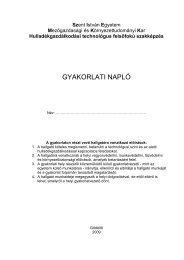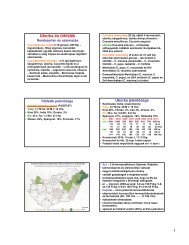PhD Fekete - SZIE version - 2.2 - Szent István Egyetem
PhD Fekete - SZIE version - 2.2 - Szent István Egyetem
PhD Fekete - SZIE version - 2.2 - Szent István Egyetem
Create successful ePaper yourself
Turn your PDF publications into a flip-book with our unique Google optimized e-Paper software.
Literature review<br />
They applied the following simplifications:<br />
Figure 2.53. Numerical model [Ling et al., 1997]<br />
a) The model is planar, created in the sagittal plane,<br />
b) Ligaments are one-dimensional bodies without mass,<br />
c) Ligaments can change in length, but only in case of tension,<br />
d) No penetration of the tibia or femur is allowed,<br />
e) No friction is assumed.<br />
As an incompleteness of the earlier models, the authors appointed that the articular surfaces of<br />
the femur are often assumed circular. To improve this problem, they used fourth order and root<br />
functions to describe the connecting surfaces (denoted by f i parameter). The authors determined<br />
the sliding-rolling ratio by calculating the arc lengths travelled on the surface of the tibia and<br />
femur between each simulation step:<br />
s =<br />
upper<br />
∫<br />
lower<br />
2<br />
⎛ dfi<br />
⎞<br />
1 + ⎜ ⎟ dx<br />
(2.12)<br />
⎝ dx ⎠<br />
If i = 1, then it is the curve of the tibia, if i = 2, then it is the curve of the femur. The slidingrolling<br />
ratio is defined as the difference between the larger distance (s l ) and the smaller distance<br />
(s s ) travelled on the femur and tibia over the smaller of the two arc lengths travelled (s s ).<br />
sliding<br />
s − s<br />
s<br />
l s<br />
/ rolling =<br />
(2.13)<br />
The problem with this definition is that e.g.: s l equals to 6 mm and s s equals to 2 mm, then if we<br />
calculate the sliding-rolling ratio from Eq. (2.13), we obtain 2. By knowing s l and s s , then by<br />
common sense it is obvious that the sliding-rolling ratio is distributed as 66% sliding and 33%<br />
of rolling. However, from the above-mentioned formula (Eq. (2.13)), we can only obtain the<br />
number of two, which grants no clear physical interpretation about the ratio.<br />
s<br />
– 56 –


